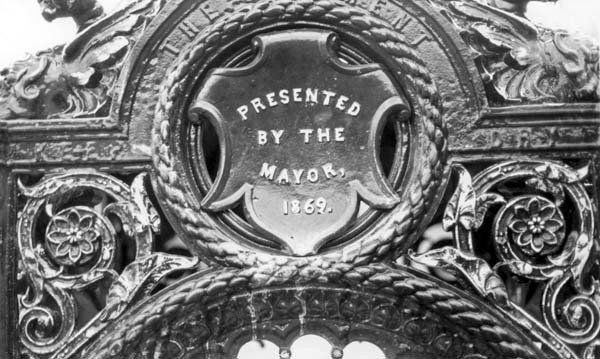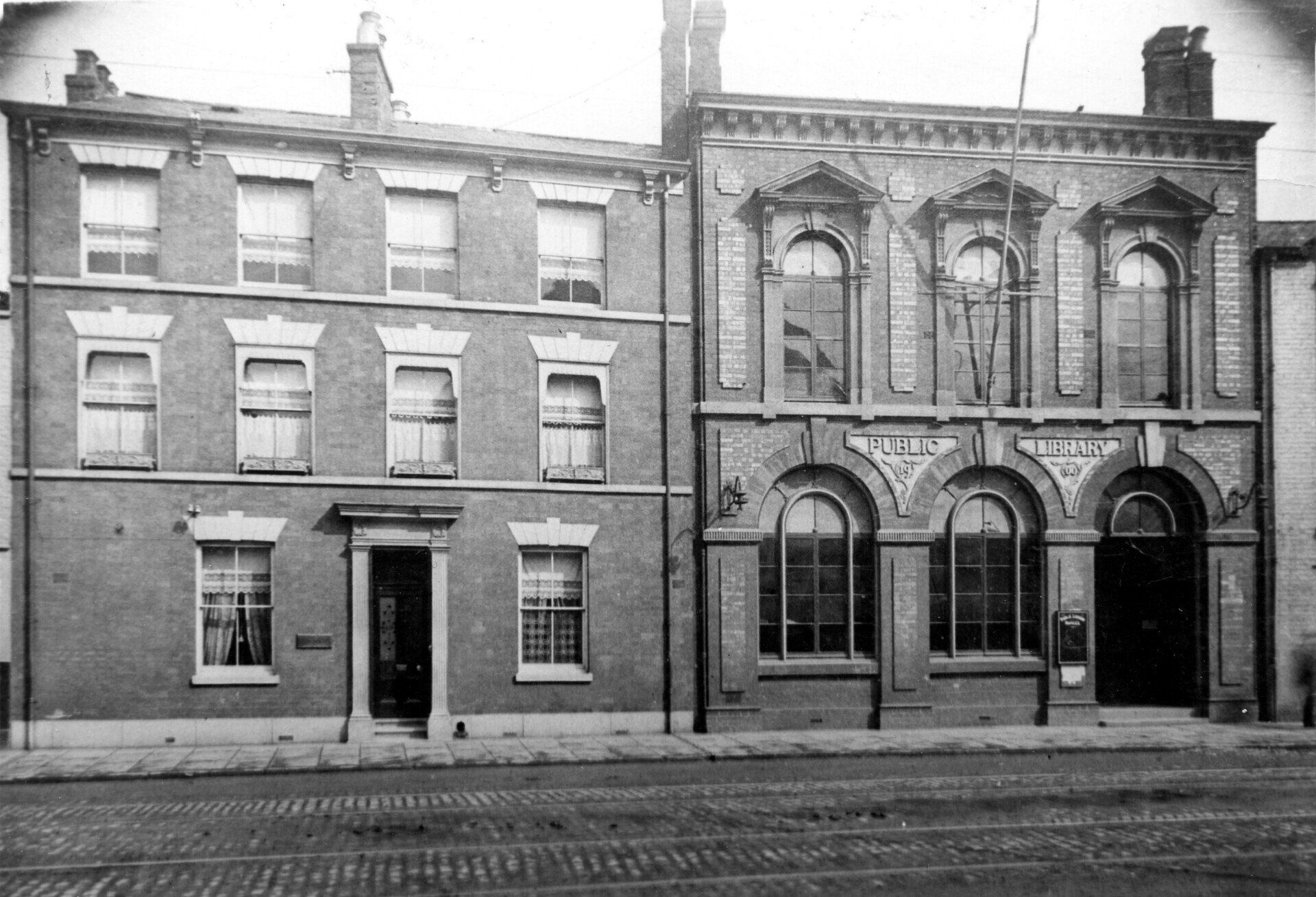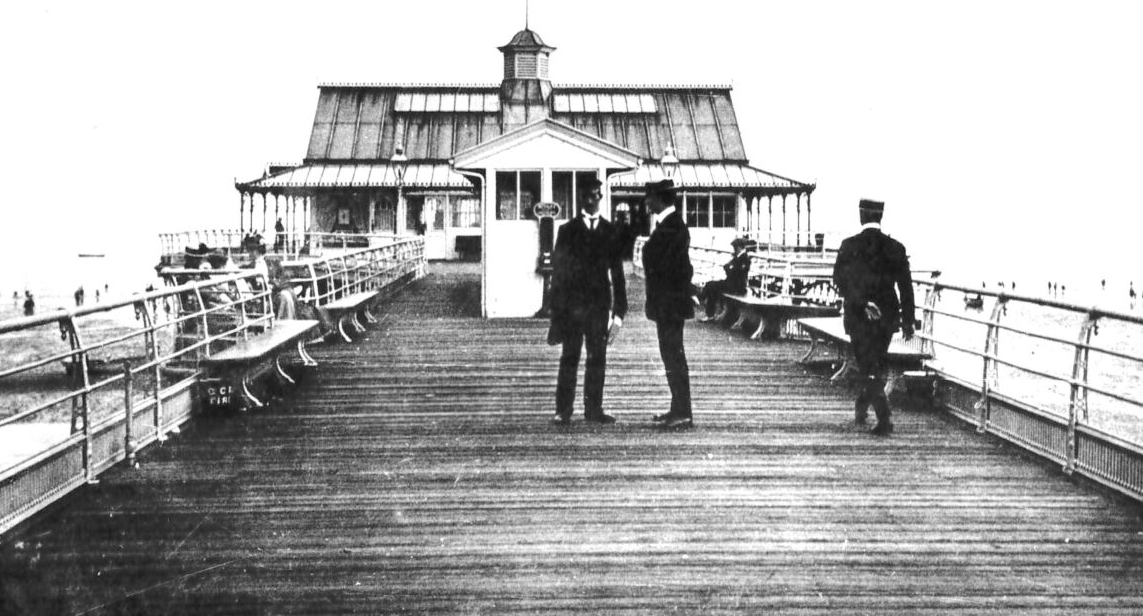About Edward Bannister
Edward Bannister (1821-1916), Mayor of Grimsby (1868-1869), made his fortune by founding one of the worlds largest coal merchants.
He used this wealth for a range of civic projects for the benefit of the people of Grimsby.
From steering the creation of Cleethorpes Pier, to setting up Grimsby Hospital, to the creation of Grimsby’s first Art School, Bannister left a tremendous legacy.
He donated the fountain to the people of Grimsby in 1869.
This exhibition will reinvigorate the town’s enthusiasm for such an important relic.
As well as displaying a number of artefacts relating to the Bannister story and the history of the fountain, the exhibition will also provide an online archive which we’ll add your stories to!

Edward Bannister outside his home at Bargate Villas (c.1901 Grimsby Town Hall)
‘I sat at the bottom, at the side of that pool and dipped my brush into the water’ remarked our ‘Grand Old Man’, Edward Bannister, casting an eye over his serene painting depicting water cascading over rocks.
A philanthropist, artist, mayor, royalist, business owner and traveller that lived until the ripe age of 94, Bannister really was a remarkable man.
Born in Hull on 3rd September, 1821, he was determined to become an artist until, on advice from a doctor, he was set on quite a different course.
Landing in Grimsby in the 1850’s he made his fortune in the coal business establishing wide connections in the industry.
In fact it is rumoured that he owned the largest private coal export trade in the world. A business that he ran until well into his eighties when it then passed over to his nephew.
But this is not just the story of a successful entrepreneur but a rather remarkable one of an even more remarkable man that dedicated 65 years of his life to the people of Grimsby.
He served as Grimsby's mayor twice over and it was during this time that he donated the drinking fountain in 1869. Other donations included a lavish clocktower and even a sailor’s working man’s club.
He served as a magistrate and went on to become Justice of the Peace in 1897, he was one of the two original guarantors to the Grimsby and District Hospital and also acted as a secretary to the institution for seven years and was a member of the committee right up until his death in 1916.
He was also Chair of the Pier Company and one of the three men responsible for the conception and build of
Cleethorpes Pier.
But more than his philanthropic escapades and strong business sense, he was a keen lover of the arts, sketching well into his 93rd year.
His artistry took him over not just the country but world; he toured the highlands, on foot with only a knapsack and his Glaswegian tutor, visited Brussels where he sketched a scene from the battle of Waterloo, Rouen, where he rose at 4am to sketch before getting back on his boat at 6, and even ventured as far out as Egypt.
But it was ultimately time and again in Grimsby where he shared his love of paintings, through
The Silver School of Art and Crafts which he established. He regularly attended its annual exhibitions of students' work.
He also generously donated most of his artwork to the town curating the beginnings of a collection for a gallery. This was originally hung in the
public library, which again he helped to establish when he sold the Mechanic's Institute to the borough on “very favourable terms”
We hope you’ll agree that Edward Bannister was a truly unique man that led an expansive, intriguing but above all generous life.
This fountain is both his legacy and love story to the town. As such, it deserves to be restored to its rightful place in our small but mighty Grimsby.
The Edward Bannister Legacies
Find out more about some of the legacies that Edward Bannister left to the people of Grimsby.
We're social...
Follow us on Instagram for the latest progress on the project.
Get in touch...
Have you got something to share about Edward Bannister? Send us a message...
Sign up for updates
Keep up to date with our project with progress reports straight to your inbox.
Sign up for our newsletter
Thank you for sending us your information. We'll be in touch...
Please try again later.
All Rights Reserved | Grimsby, Cleethorpes and District Civic Society | Privacy Policy | #designedbynomad




